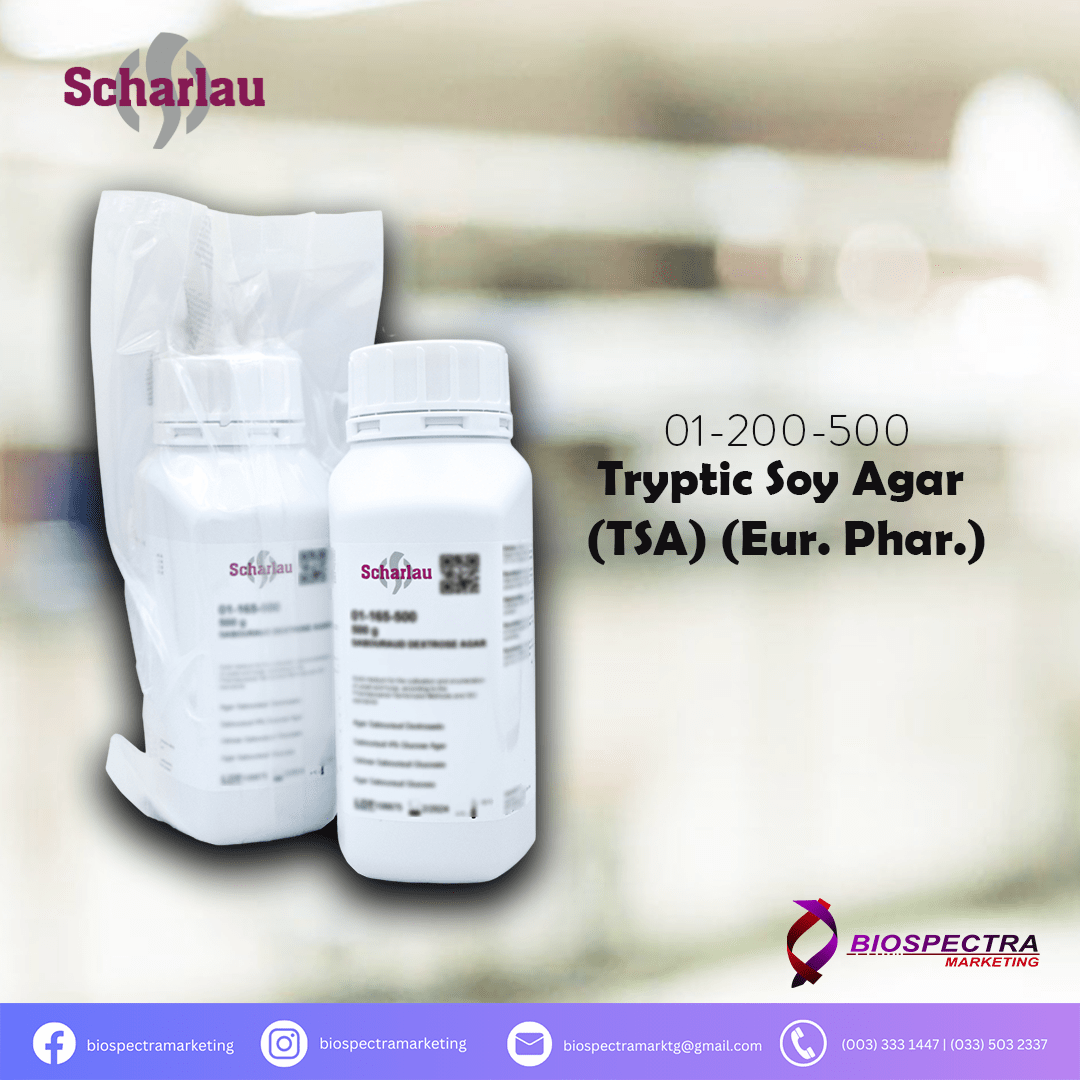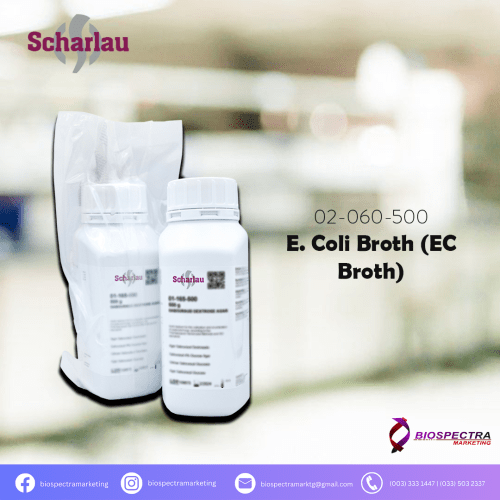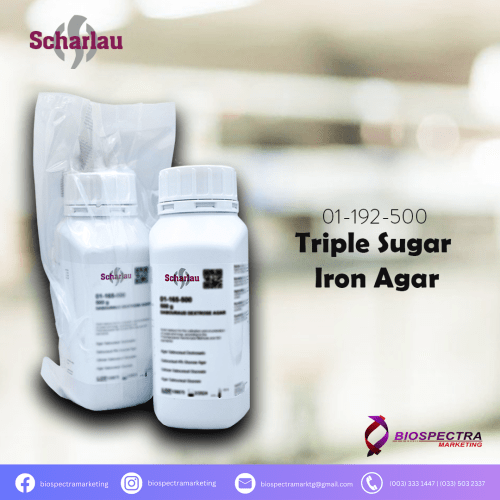PRODUCTS
SCHARLAU Tryptic Soy Agar (TSA) (Eur. Pharm.)
01-200-500
TSA is a widely used medium containing two peptones which support the growth of a wide variety of organisms, even that of very fastidious ones such as Neisseria, Listeria, Brucella, etc
It is frequently used for routine diagnostic purposes due to its reliability and its easily reproducible results. The following list includes some of its most common applications:
- Sensitivity testing, either by the Kirby-Bauer system or by following the WHO guidelines. Both systems recommend the use of the Mueller-Hinton Agar or verification purposes.
- The medium provides, with added blood, perfectly defined haemolysis zones, while preventing the lysis of erythrocytes due to its sodium chloride content.
- It can be used for the preparation of an exceptionally nutrient 'chocolate´ agar, thanks to the richness of its peptones.
- In a reducing environment or with a CO2 enriched atmosphere, it provides an excellent medium for the isolation of Brucella and Neisseria. It may be made selective by using additives.
- Most streptococci grow in this medium though clear differences can be observed from one species to another.
- Tryptic Soy Agar can be used as a selective medium for the count of urine samples although differentiation must be done on selective differential media.
- Several tests for the differentiation and identification of staphylococci can be performed on this medium, provided suitable additives are used.
- Yeast, particularly Candida species, can grow in this medium forming very characteristic colonies.
- Chromogenic pseudomonas frequently produce pigmentation on TSA and are therefore easily recognized.
- A vast bibliography documents its applications in the food industry.
- It has been frequently used in the Health industry to produce antigens, toxins, etc...
- Its simple and inhibitor-free composition makes it suitable for the detection of antimicrobial agents in food and other products.
- A balanced and high nutrient value together with a lack of fermentable carbohydrates make this medium ideal for maintaining bacterial strains.
- Classical media for microbiological examination of non-sterile products according to Pharmacopeial Harmonised Methods.





